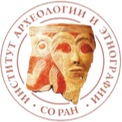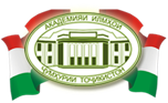|
This exciting cross-disciplinary project is a collaboration between scientists from Norway, Sweden, Denmark, and Tajikistan. It will answer questions such as when did humans arrive in Central Asia and what was the environment and climate like at the time? Were there waves of migration of different species and did they only move when the climate was favorable, for example in the warm periods between glaciations? These questions are important because if we truly want to understand who we are today we need to understand our evolutionary past. Central Asia is a key route for human expansion into Asia. When humans arrived in this region they manufactured stone tools using a variety of different technologies which became more and more sophisticated through time; the shapes of these tools are characteristic of the human species that made them. Such tools are often found in the thick wind-blown dust (loess) deposits that cover Central Asia, and particularly in the loess deposits in Tajikistan. This dust can be many tens of meters thick and has deposited continually over the last 2-3 million years. During warmer, wetter periods the organic content of the dust increased because of plant and animal activity and these periods of soil formation are recorded in the grey-brown loess as darker bands. Large numbers of stone tools are found in these ancient soil layers. To understand the history of human activity recorded in these deposits we need to know exactly when the dust was deposited, and what the past climate and environment was like. Dating the dust and the tools is at the heart of this project and will be carried out by teams from the Technical University of Denmark and the University of Aarhus. Archaeologists from the University of Oslo together with earth scientists and archaeologists from the Tajik Academies of Sciences will investigate the environments recorded in the soils and attempt to describe the variations in human populations through time. Climate scientists from Uppsala University will use a variety of measurements to reconstruct the local climate and compare this to changes in global climate. This project will give Nordic scientists access to new research areas, establish new links with Tajik researchers and students, and provide a broad cross-disciplinary education to young scientists. |






